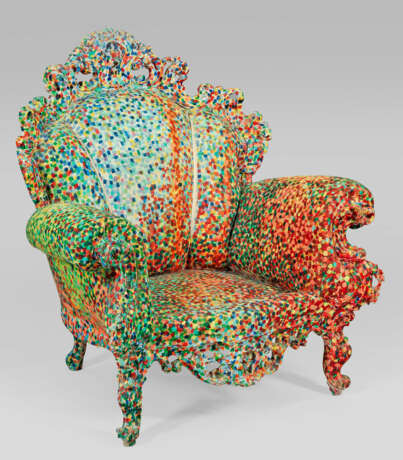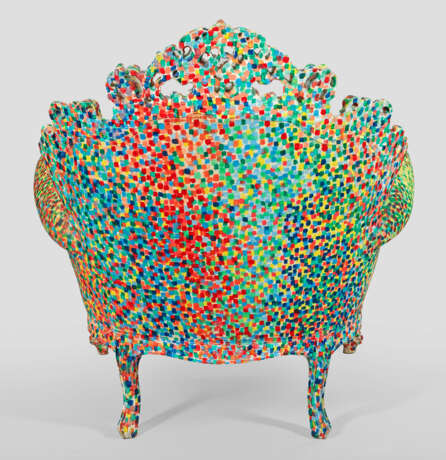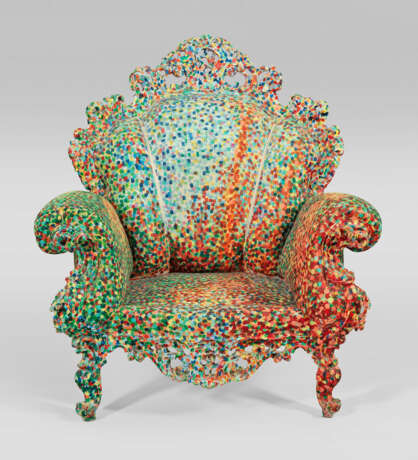ID 1341063
Lot 1892 | Früher "Poltrona di Proust"-Fauteuil von Alessandro Mendini
Estimate value
€ 16 000 – 32 000
Buchenholz, geschnitzt und weiß gefasst sowie weißer Baumwollstoff, insgesamt flächendeckend polychrom mit Acrylfarbe handbemalt. Passig geschweifte, durchbrochen gearbeitete Zarge sowie weit ausladende Armlehnen aus üppigen Voluten. Gebogte, hochaufgeworfene Rückenlehnenrahmung. Allseitig gepolstert und bezogen. Entw. Alessandro Mendini, 1978. Unw. besch.; H. 109 cm. 103 cm x 90 cm. Sitz-H.35 cm.
Der 1978 von Alessandro Mendini (1931-2019) entworfene Proust-Sessel bildet den Start einer Reihe sog. Re-Designs, die Form und Dekor bereits vorhandener Entwürfe neu interpretierten. Als Vorbild des Sessels dient ein neobarockes Möbel aus dem Umfeld Marcel Prousts, auf das Mendini im Rahmen der Entwicklung eines Stoffentwurfs für Cassina stieß. In seinem Dekor bezieht sich das Möbel auf ein pointillistisches Gemälde Paul Signacs. So gelingt es Mendini "nicht nur den Impressionismus, sondern zugleich das Barock mit seinem zentralen Motiv der Unendlichkeit zu zitieren". Mit dem zunächst als Einzelstück gedachten, dann aber als Unikat bzw. in Kleinstserie gefertigten Entwurf, bricht Mendini mit den klassischen Design-Qualitäten wie originäre Gestaltung, funktionaler Aufbau oder ökonomischer Produktion. Das vorliegende Möbel mit seinem handgetupften Dekor ist eine der frühesten Ausführungen.
Vgl. Vitra Design-Museum sowie Peter Weiß: Alessandro Mendini: Dinge, Projekte, Bauten, S.101 und 190.
Provenienz: Sammlung Hans Ernst Weidinger (1949-2023). Seit 1985 in der Sammlung des Textildesigners Prof. Karl Höing (*1957).
One of the first handpainted wood and fabric productions of the Poltrona di Proust easy chair designed by Alessandro Mendini. Minor flaw.
Italien. Mailand. Studio Alchimia. Ende 1970er Jahre.
| Address of auction |
Kunstauktionshaus Schloss Ahlden GmbH Große Str. 1 29691 Ahlden(Aller) Germany | ||||||||||||||
|---|---|---|---|---|---|---|---|---|---|---|---|---|---|---|---|
| Preview |
| ||||||||||||||
| Phone | +49 5164 80100 | ||||||||||||||
| Buyer Premium | 25.0 | ||||||||||||||
| Conditions of purchase | Conditions of purchase | ||||||||||||||
| Business hours | Business hours
|





